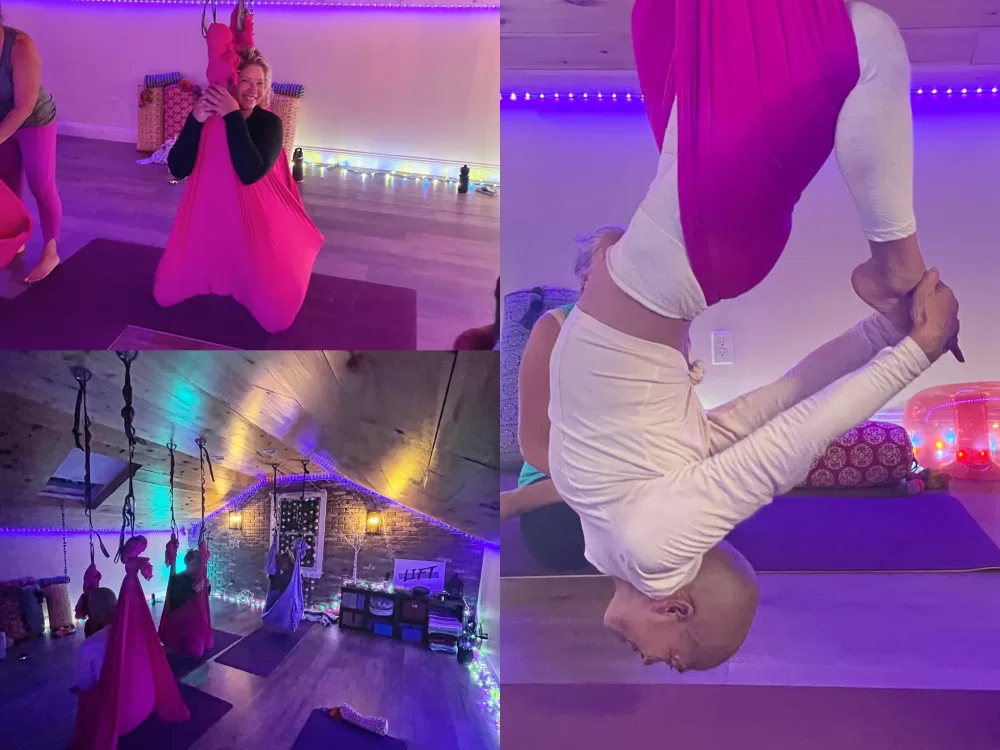Aerial yoga combines traditional asana (the physical postures of yoga) and yoga philosophies with the aerial arts. Silk fabrics and/or ropes are hung from above to aid practitioners in forming shapes. You can be fully supported by the silks — even lying down entirely, like in a hammock — or wrap the silks around particular body parts, keeping other parts on the floor. Hanging fully or suspending individual body parts is believed to create traction and open your body more gently and intuitively than when you’re on the floor. The silks and ropes can also be helpful for balance.
A combination of the arts and athletics, aerial yoga offers several physical and psychological benefits:
- Improved flexibility, stability, and balance. A 2019 study observed that aerial athletes have exceptional flexibility, balance, and strength.
- Traction and joint decompression. Hanging upside down and inverting is said to decompress the joints, which can compress over time due to gravity and age.
- Reduced risk factors for heart disease. While research on this style of yoga is limited, the most-cited study, conducted in 2016 by the American Council on Exercise (ACE), found a significant reduction in the risk factors associated with cardiovascular heart disease.
- Low to moderate intensity. The same ACE-commissioned study found that 50 minutes of aerial yoga can burn upwards of 300 calories, making it a form of low to moderate-intensity exercise.
- Improved mental health. A small study noted significant improvements in depression and stress levels when people practiced aerial arts for the love of movement. This seems to bode particularly well for aerial yoga, which applies yogic philosophies and is often less competitive and more accessible than a circus-based or formal acrobatics class.



